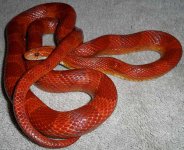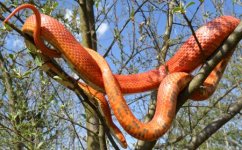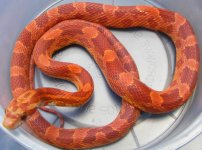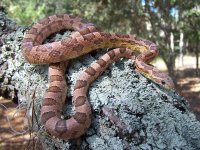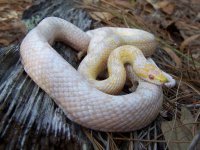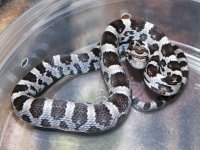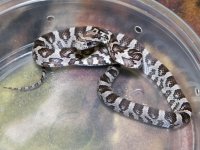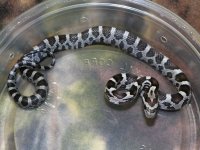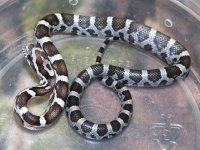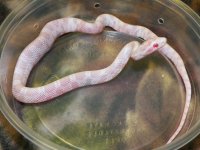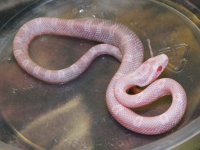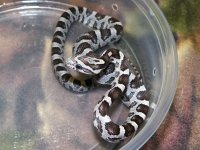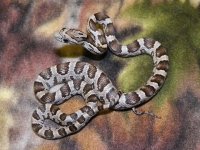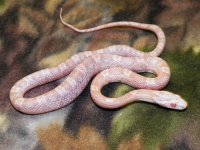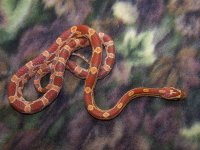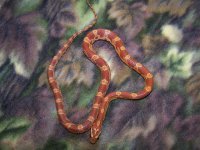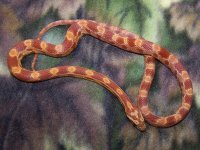snakepunk
New member
I don't think comparing a strawberry to a red-factor amel, especially one that's from a bloodred parent, is a good comparison. Not to go off in another direction, but I also think bloodreds (NOT just diffused) are homozygous for redcoat, another seemingly dominant gene, as well. Not to mention the potential problems using one from ultra lines...
Some strawberries/red-factors may also be hypo-a's in addition to being het or hom for redcoat as well. This would give us several different phenotypes, which is what we are seeing.
Initially, what led me wonder about all this was the following observations (both in my own animals and those I've seen in other's pics online and in live animals at shows):
#1. Strawberry anerys that looked NOTHING like the pink salmon anerys. I know selective breeding is often attributed, but there should at least be some variation in a clutch (not accounting for sexual dimorphism). I've seen several unrealted clutches from different breeders where all the resulting "strawberry" anerys just look like typical ghost. My assumption is that strawberry stock was simply a misidentified Hypo-A mutant.
#2. F1's that are pink from outcrossed pink animals. Take a NICE salmon snow/ghost and breed it to run-of-the mill anery and see if you don't get 50% pink anerys. I challenge anyone to try this.
And most importantly, #3. Anerys with a pink background, not ghosts, but anerys with black saddles. IF strawberry is a form of hypomelanism, than the saddles would be a tan/brown color like other ghost and phantoms.
Again I could be COMPLETELY wrong about all this, but sometimes I do think it is wise to go back and re-test our theories and to question what we think we know.
Some strawberries/red-factors may also be hypo-a's in addition to being het or hom for redcoat as well. This would give us several different phenotypes, which is what we are seeing.
Initially, what led me wonder about all this was the following observations (both in my own animals and those I've seen in other's pics online and in live animals at shows):
#1. Strawberry anerys that looked NOTHING like the pink salmon anerys. I know selective breeding is often attributed, but there should at least be some variation in a clutch (not accounting for sexual dimorphism). I've seen several unrealted clutches from different breeders where all the resulting "strawberry" anerys just look like typical ghost. My assumption is that strawberry stock was simply a misidentified Hypo-A mutant.
#2. F1's that are pink from outcrossed pink animals. Take a NICE salmon snow/ghost and breed it to run-of-the mill anery and see if you don't get 50% pink anerys. I challenge anyone to try this.
And most importantly, #3. Anerys with a pink background, not ghosts, but anerys with black saddles. IF strawberry is a form of hypomelanism, than the saddles would be a tan/brown color like other ghost and phantoms.
Again I could be COMPLETELY wrong about all this, but sometimes I do think it is wise to go back and re-test our theories and to question what we think we know.

